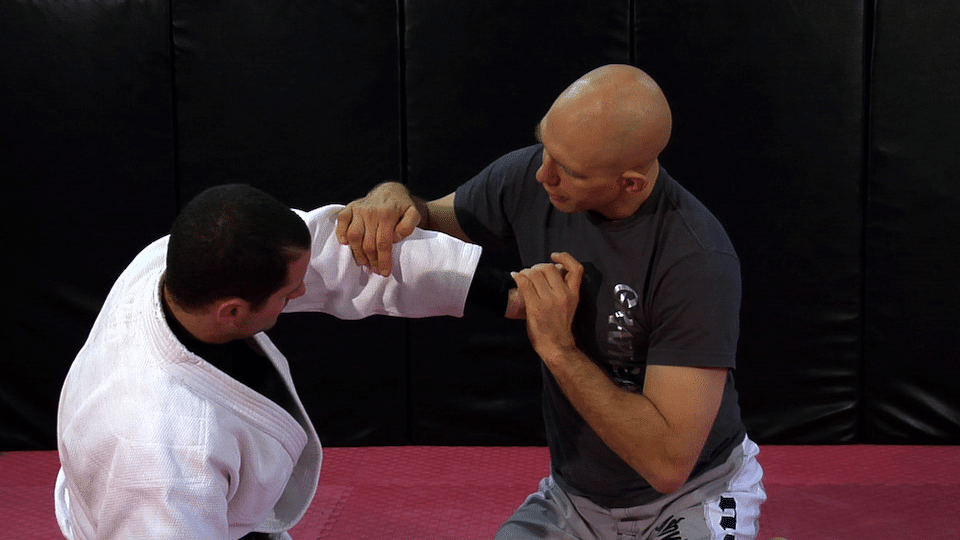
Jiu-jitsu and submission grappling offer techniques to attack almost every major joint in the body including the elbow, shoulder, neck, knees, feet, and ankles.
These should be your bread and butter submissions because they have a long, proven track record of effectiveness.
I think a bit of variety is a good thing, however, so let’s talk about a not-so-common attack: wrist locks!
The wrist is the most under-attacked joint in grappling. Just about every time you are attacking the arm you have access to the wrist as well. If your opponent is really good at defending the armlock, for example, you may be able to switch to a quick wristlock and get a submission that way.
The video on wrist lock safety below also has lots of examples of wrist locks that you can intentionally (and accidentally) apply on the ground:
There are lots of ways to compress, extend and twist the wrist. Just watch an aikido class or read a book and traditional Japanese Ju-jutsu. Typically these wristlocks start with both combatants in a standing or kneeling position, but that doesn’t mean that they don’t also work on the ground.
But against resistance – an opponent who is really fighting you – wrist locks are a lot easier to do on a pinned opponent than on a more mobile standing opponent.
I am not alone in my respect for the wristlock in grappling. Fernando ‘Terere’ and Fredson Paixao are just 2 of many BJJ players who have used the wristlock at the highest levels of competition. One the home front, one of my main training partners is a master of sneak wristlock attack. When we spar I constantly have to watch where I put my hands or he is going to trap a hand and lock the wrist.
Now for an important safety announcement: APPLY WRISTLOCKS SLOWLY!! Here is why:
- The wrist is a small joint with many small bones and ligaments and thus susceptible to injury in the first place
- Wrist locks are relatively easy to counter, so the temptation is to slam them on quickly
- If you slam them on quickly you WILL injure your training partners.
In a very real sense wrist locks are the heel hooks of the upper body – very effective, but also prone to injure your partner if misused.
I’ve accidentally injured a training partner’s wrist with a simple twist of the hips (here for the full story) and although nothing was actually broken it was still a LONG recovery for him.
The good news is that usually failing at a wristlock submission doesn’t put you in a bad position, so you have nothing to lose by applying them in a slow, controlled manner.
Here are some examples of wrist lock techniques!
First, a small snippet from the video above that I put on my Instagram – it’s the part that includes my favourite wrist lock attack, Aikido’s ‘Sankyo’ lock starting when you’re caught in the rear mount…
Now here’s a way to set up that same Sankyo wrist lock from the knees. This is one of the few submissions that’ll work on an opponent fully mounted on you!
Next let Jeff Meszaros, a friend and former training partner of mine, show you one of his sneakier attacks from the closed guard…
And finally, you can use wrist locks to finish a failed triangle choke. An example of that is shown below; it’s the first of the 5 triangle choke followups in the video…
Go forth and wrist lock some training partners, BUT CAREFULLY AND WITH CONTROL!
P.S. As you can see from above I put out a LOT of material on social media…
So if you don’t want to miss any of it make sure that you subscribe on Youtube and follow me on Instagram.
And while you’re at it, follow me on Twitter and on Facebook as well!
Much of the content I put out on each of these platforms is unique to that platform, so by following me in multiple places you won’t miss anything.
This article was last updated Jan 18, 2018






